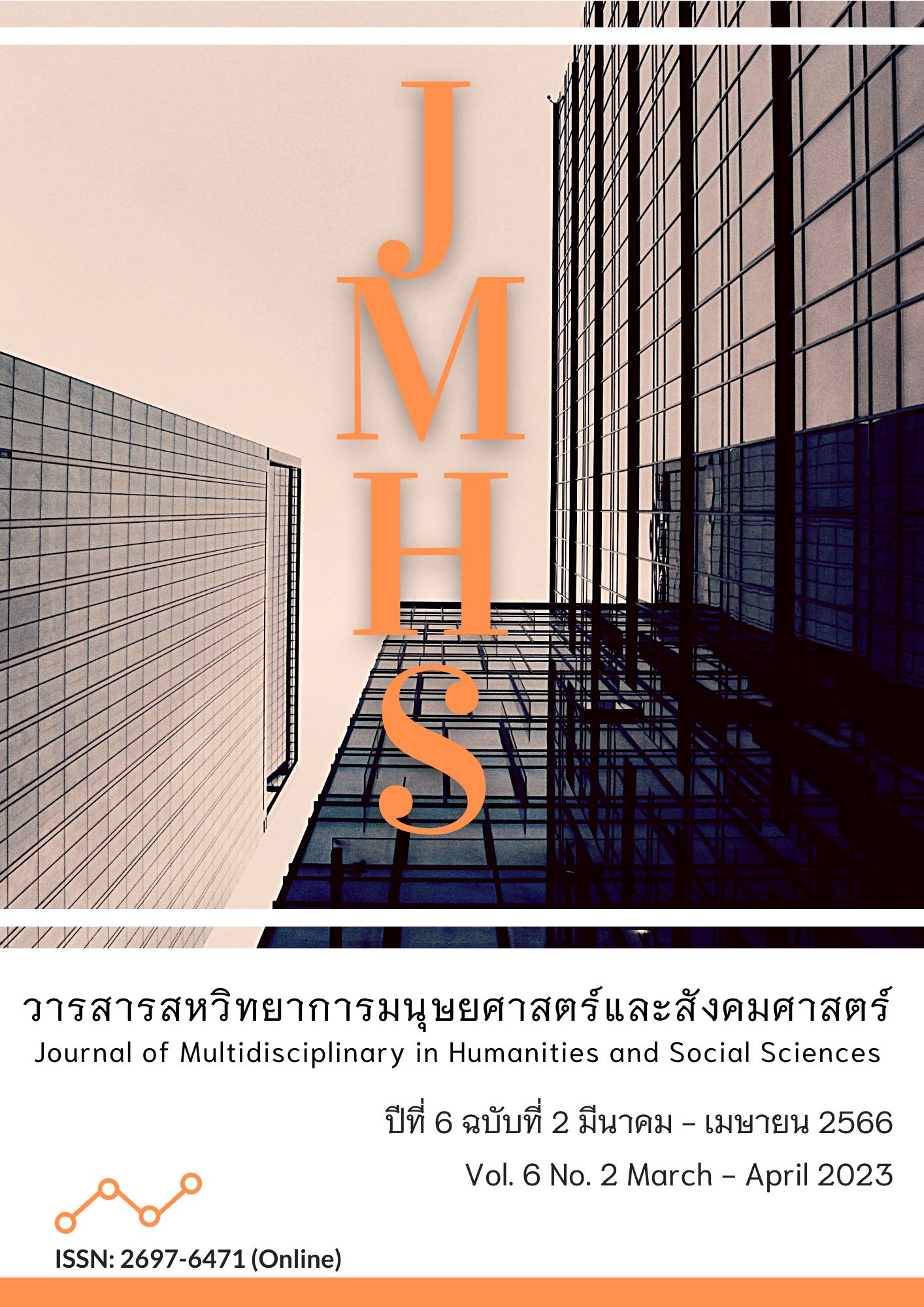Effectiveness of Information security Management in Saraburi Hospital
Main Article Content
Abstract
This article aimed to 1) study the influence of information literacy, security awareness, information management, and information usage behaviors on the effectiveness of information system security management at Saraburi Hospital, and 2) determine optimal operational guidelines for information system security. This research used an integrated approach, combining quantitative and qualitative methods. The population samples were personnel of Saraburi Hospital, divided into two groups. The first group contained 317 personnel of Saraburi Hospital classified by profession, obtained by stratified random sampling, and the second group contained 10 quality managers. The data were analyzed by descriptive statistics and path analysis of factors affecting the effectiveness of information security management and interpreted with a focus group discussion with the quality management team of Saraburi Hospital. The results are as follows:
Regarding level of knowledge, awareness, information management, information usage behavior and the effectiveness of information system management, opinions of all aspects were high and the path analysis of factors affecting the effectiveness of information security management was consistent with empirical data (Chi-square =142.41, df. = 54, Chi-square/df. = 2.63, GFI = 0.94, AGFI = 0.90, CFI = 0.98 and RMSEA = 0.07). Information management had the most influence on the effectiveness of information security management (1.040), followed by awareness (0.540), knowledge, and information usage behavior (0.220, 0.081), respectively. It was also found that information management, IT knowledge, and awareness indirectly influenced the effectiveness of information security management through information usage behavior, with 67% predictive power. The results of the focus group discussion showed that safety management was effective and that there must be a way of planning management, control, supervision, and the preparation of manuals as guidelines for information system practices. Guidelines must include administrator and user sections, direct performance control, and be constantly updated.
Article Details

This work is licensed under a Creative Commons Attribution-NonCommercial-NoDerivatives 4.0 International License.
Views and opinions appearing in the Journal it is the responsibility of the author of the article, and does not constitute the view and responsibility of the editorial team.
References
ชุษณะ มกรสาร และ วรรษา เปาอินทร์. (2561). Thai Medical Informatics–TMI Hospital IT Maturity Model. แนวทางการพัฒนาคุณภาพระบบเทคโนโลยีสารสนเทศโรงพยาบาล. นนทบุรี: กระทรวงสาธารณสุข.
นิตยปภา จันทะปัสสา. (2562). การพัฒนาระบบสารสนเทศการบริหารงานบุคคล โรงเรียนบ้านดอนตูม ดอนโด สำนักงานเขตพื้นที่การศึกษาประถมศึกษา มหาสารคาม เขต 1. วารสารวิชาการและวิจัย มหาวิทยาลัยภาคตะวันออกเฉียงเหนือ, 9(1), 82-89.
นิพิฐพนธ์ สนิทเหลือ, วัชรีพร สาตร์เพ็ชร์ และ ญาดา นภาอารักษ์. (2562). การคำนวณขนาดตัวอย่างด้วย โปรแกรมสำเร็จรูป G* Power. วารสารสถาบันเทคโนโลยีแห่งสุวรรณภูมิ, 5(1), 496-507.
ภิรมย์ กมลรัตนกุล. (2550). หลักการทำวิจัยให้สำเร็จ. (พิมพ์ครั้งที่ 5). กรุงเทพฯ: เท็กซ์ แอนด์ เจอร์นัลพับลิเคชั่น.
โรงพยาบาลสระบุรี. (2565). ฐานข้อมูลการเงิน. สืบค้นเมื่อ 14 กุมภาพันธ์ 2565, จาก http://Intranet.srbr.in.th/Finance/
วศินี หนุนภักดี. (2562). การวิเคราะห์ความเสี่ยงของผู้บริหารเทคโนโลยีสารสนเทศระดับสูงของหน่วยงานภาครัฐในยุคเศรษฐกิจดิจิทัล. วารสารบัณฑิตวิทยาลัย มหาวิทยาลัยสวนดุสิต, 13(2),173-187.
สมศิริ พันธุ์ศักดิ์ศิริ และ เสาวนีย์ สมันตรีพร. (2565). ภาวะวิกฤติของระบบสารสนเทศโรงพยาบาลสระบุรี. วารสารนวัตกรรมการจัดการศึกษาและวิจัย, 5(1), 127-136.
สมศิริ พันธุ์ศักดิ์ศิริ. (2562). การพัฒนาระบบบันทึกข้อมูลการเคลื่อนย้ายผู้ป่วยออนไลน์ โรงพยาบาลสระบุรี. วารสารโรงพยาบาลแพร่, 27(2), 93-109.
อดิศักดิ์ ถีระแก้ว และ ปุญชรัศมิ์ ศักดิ์ธรรมเจริญ. (2561). ประสิทธิผลและความพึงพอใจของการให้ความรู้แก่ผู้ป่วยต่อการใช้เอกสารอิเล็กทรอนิกส์ ร่วมกับเอกสารคำแนะนำสำหรับผู้ป่วยมะเร็ง ที่รับการรักษาด้วยรังสี. Journal of Thai Association of Radiation Oncology, 24(1), 14-24.
อนันต์ ชูยิ่งสกุลทิพย์. (2562). ระบบพัฒนาสมรรถนะด้านเทคโนโลยีสารสนเทศ และการสื่อสารเพื่อความมั่นคงปลอดภัยของสารสนเทศ. วารสารสนเทศศาสตร์, 37(3), 59-80.
อานนท์ ไทยเจริญ และ สมศิริ พันธุ์ศักดิ์ศิริ. (2564). ระบบสารสนเทศโรงพยาบาลสระบุรี: ประสบการณ์และโอกาสพัฒนา. วารสารโรงพยาบาลสระบุรี, 26(70), 43-52.
Arbanas, K., & Žajdela Hrustek, N. (2019). Key Success Factors of Information Systems Security. Journal of Information and Organizational Sciences, 43(2), 131-144.
Bloom, B. S. (1956). Taxonomy of educational objectives. Vol. 1: Cognitive Domain. New York: McKay.
Chesti, I. A., Humayun, M., Sama, N. U., & Jhanjhi, N. Z. (2020, October). Evolution, mitigation, and prevention of ransomware. In 2020 2nd International Conference on Computer and Information Sciences (ICCIS) (pp. 1-6). IEEE.
Cohen, J. (1992). Statistical Power Analysis. Current Directions in Psychological Science, 1(3), 98-101.
Edwards, J. S. (2022). Where Knowledge Management and Information Management Meet: Research Directions. International Journal of Information Management, 63, 102458.
Fayol, H. (2016). General and Industrial Management. Ravenio Books.
Gross, B. M. (1972). Mathematical models in linguistics. New Jersey: Prentice-Hall.
Hair, J. F., Black, W.C, Babin, B.J., & Anderson, R. E (2010). Multivariate Data Analysis. (7th ed.). New Jersey: Pearson Education.
Hassandoust, F., & Techatassanasoontorn, A. A. (2020). Understanding Users' Information Security
Awareness and Intentions: A Full Nomology of Protection Motivation Theory. In Cyber Influence and Cognitive Threats. (pp. 129-143). Academic Press.
Hong, S., Park, S., Park, L. W., Jeon, M., & Chang, H. (2018). An Analysis of Security Systems for Electronic Information for Establishing Secure Internet of Things Environments: Focusing on Research Trends in The Security Field in South Korea. Future Generation Computer Systems, 82, 769-782.
Hwang, I., Wakefield, R., Kim, S., & Kim, T. (2021). Security Awareness: The First Step in Information Security Compliance Behavior. Journal of Computer Information Systems, 61(4), 345-356.
Karabatak, S., & Karabatak, M. (2019). Information security awareness of school administrators. In 2019 7th International Symposium on Digital Forensics and Security (ISDFS) (pp. 1-6). IEEE.
Maslow, A. H. (1954). Motivation and Personality. New York: Harper and Row.
Safa, N. S., Maple, C., Furnell, S., Azad, M. A., Perera, C., Dabbagh, M., & Sookhak, M. (2019). Deterrence And Prevention-Based Model to Mitigate Information Security Insider Threats in Organizations. Future Generation Computer Systems, 97, 587-597.
Schermerhorn, J. R., Hunt, J. G., & Osborn, R. N. (1991). Managing Organizational Behavior. New York: Wiley.
Stefaniuk, T. (2020). Training in Shaping Employee Information Security Awareness. Entrepreneurship and Sustainability Issues, 7(3), 1832.
Szczepaniuk, E. K., Szczepaniuk, H., Rokicki, T., & Klepacki, B. (2020). Information Security Assessment in Public Administration. Computers & Security, 90, 101709.
Thangavelu, M., Krishnaswamy, V., & Sharma, M. (2020). Comprehensive Information Security Awareness (CISA) in Security Incident Management (SIM): A Conceptualization. South Asian Journal of Management, 27(2), 160-188.


